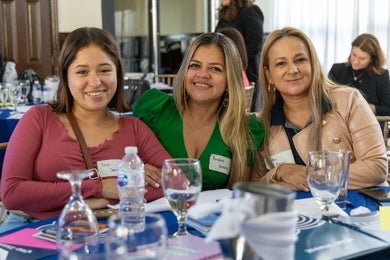
New Data Shows What Drives Business Growth in Colombia
Only about a quarter of Colombian companies created in 2017 were still operating in 2022, of which only 6% (4,600) grew. What are the drivers behind businesses that not only survive but thrive? Our new report with Confecámaras starts digging into the data, focusing on growth factors, job creation, and gender gaps.

The New Gender Gaps Brought about by Technological Innovation and How to Avoid Them
New technology applications have a great potential to help us achieve equity over the next decade. To that end, it is essential to invest in innovations that do not replicate gender biases, are developed by women and promote women’s technology investments.

Switching Lenses for Development: How to Use Gender-Lens Investment for Equality
Gender lens investment has great social impact, and a safe, sustainable long-term ROI, bringing about profitability while pushing for equality.

Seeking a Just, Gender-Conscious Climate Transition
The net-zero transition will struggle to move ahead if it’s not gender-conscious and doesn’t meet the needs of entire communities across Latin America and the Caribbean.
Eliminating Gender Bias from Lending in Mexico
The Mexican fintech Konfío is eliminating gender bias by using fair algorithms to make lending decisions based only on applicants’ credit risk. A new IDB Invest study that measures the impact of a Konfío loan on company sales shows that women-led businesses have the most to gain.

Inclusive Procurement 101: How to Integrate Women into Supply Chains
Inclusive supply chains that integrate women suppliers, mainly women-led or -owned SMEs, drive economic growth, employment and business benefits, while creating an opportunity to build partner loyalty and offer new perspectives and ideas for innovation.